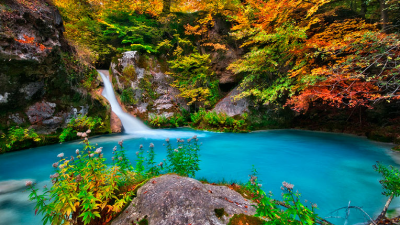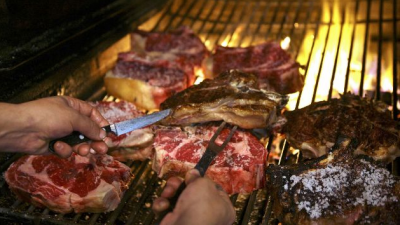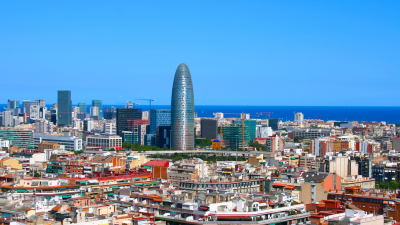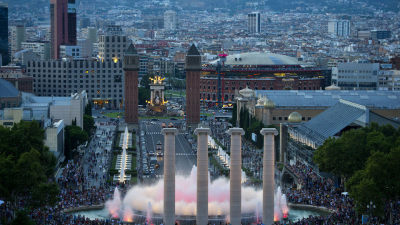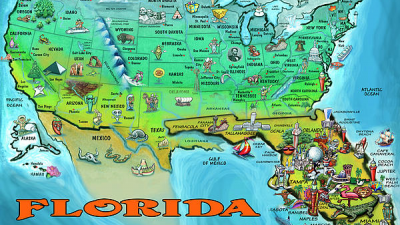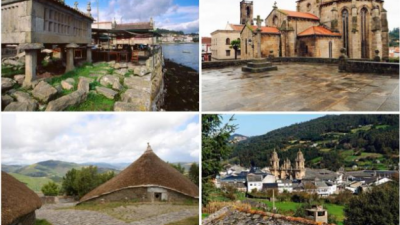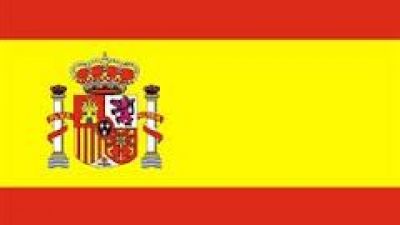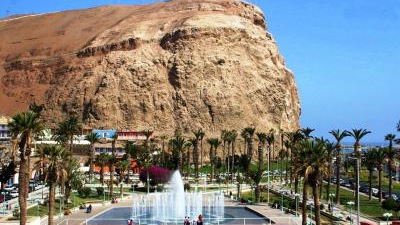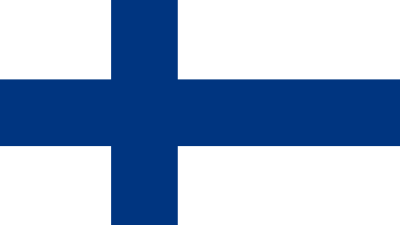Places to visit in Galicia
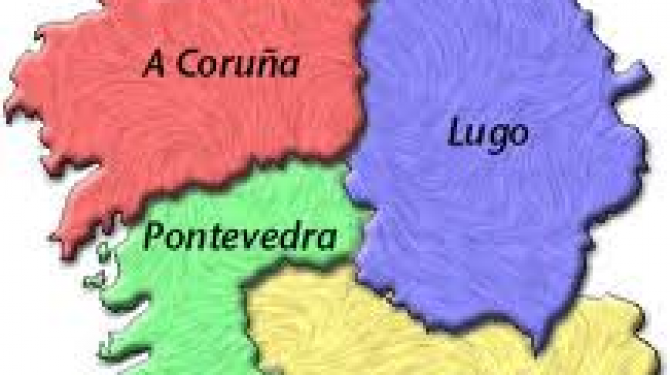
Source: listas.20minutos.es
37 places to discover which are the best places to visit in Galicia.
TOP 37:
VILAR DE LONAS (Lugo)
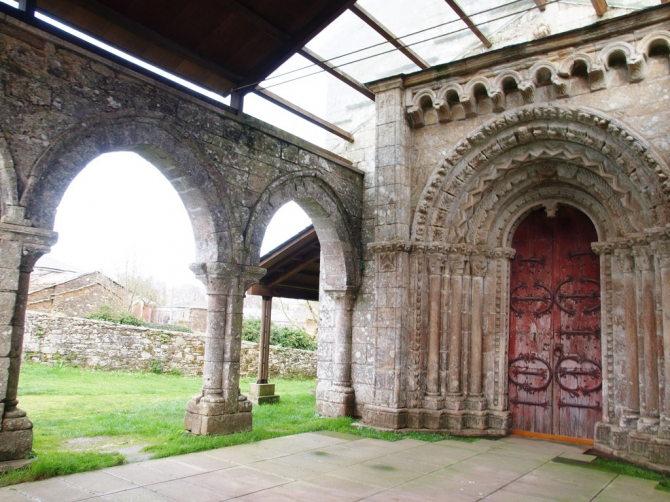
Small village belonging to the municipality of Palas del Rey, with the Church of Vilar de Donas, as the maximum exponent. Linked to the Camino de Santiago, it was owned by the "Guardians of the Camino", the famous Order of the Knights of Santiago. In the interior we find several tombs of important knights of the Order, as well as well preserved Gothic frescoes.
TOP 36:
OSEIRA (Ourense)
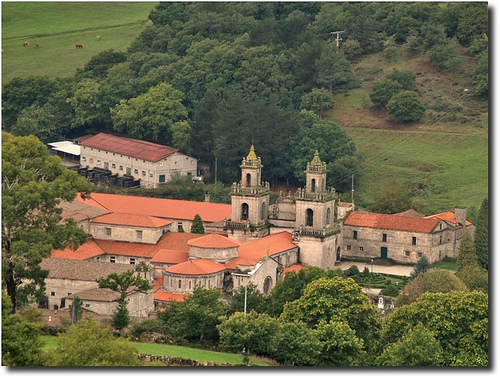
Oseira, whose name comes from the large number of bears that inhabited the region in the past, has its greatest attraction in the Monastery of Santa María la Real de Oseira, which, with 8 centuries of history, remains in a wonderful state of conservation. Documented its existence from 1137, in the year 1835, was abandoned by the friars as a result of the confiscation of Mendizabal, leading in the successive years the looting of the place. The monks returned again in 1929, beginning then their reconstruction.
TOP 35:
HIO (Rías Baixas, Pontevedra)
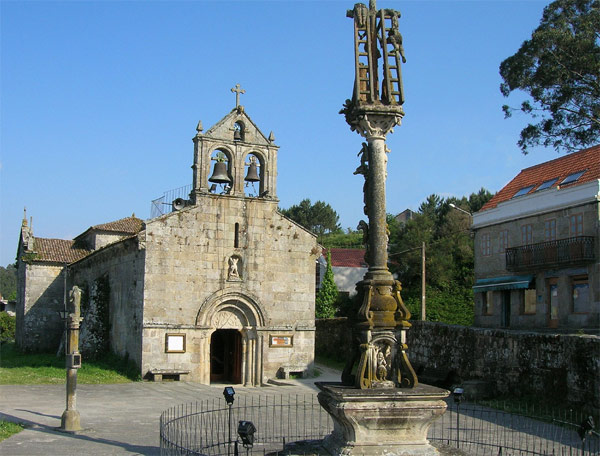
With a population of 2,894 inhabitants, located at the end of the Morrazo peninsula, it is the mainland closest to the Cíes Islands (National Park of the Atlantic Islands of Galicia) The Hio parish, being surrounded by the sea, Atlantic Ocean to the West, North and South, and the Ría de Aldán to the East, has an evident maritime character, combined with the natural enclaves of Cabo Home, Mount Facho de Donón or the Natural Park of the Dunas de Barra and Soavela coast. The symbol of the town is the famous "cruceiro do hio", a peculiar cruise with scenes of the life of Christ carved in a single rock, considered a jewel of Romanesque.
TOP 34:
PANXON (Rias Baixas, Pontevedra)
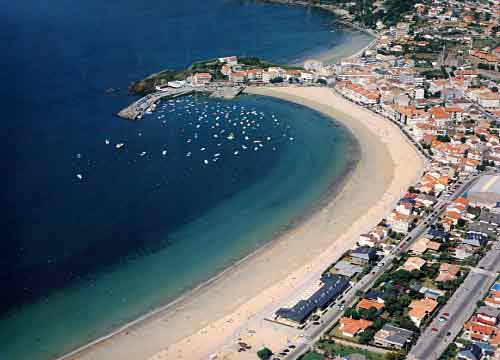
Small town of little more than 3000 inhabitants, is a town of fishing tradition and a prominent summer tourist destination, thanks to its beautiful sandy beaches. Highlights: The beach of Panjón and Playa América Votivo del Mar Temple Parochial church of the XII Century Monument to the universal marina
TOP 33:
NOIA (Rías Baixas, La Coruña)
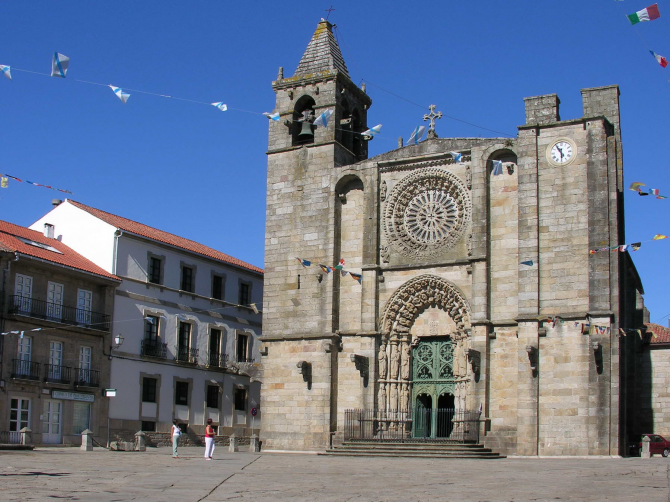
Located to the south of the mouth of the river Tambre, and limiting with the mountain ranges of Outes and Brión, how many with a great variety of mountain, coastal and fluvial ecosystems. Highlights: Suspension bridge over the river Tambre Church of San Martín Parish of Santa Cristina de Barro
TOP 32:
RIBAS DE SIL (Ourense)
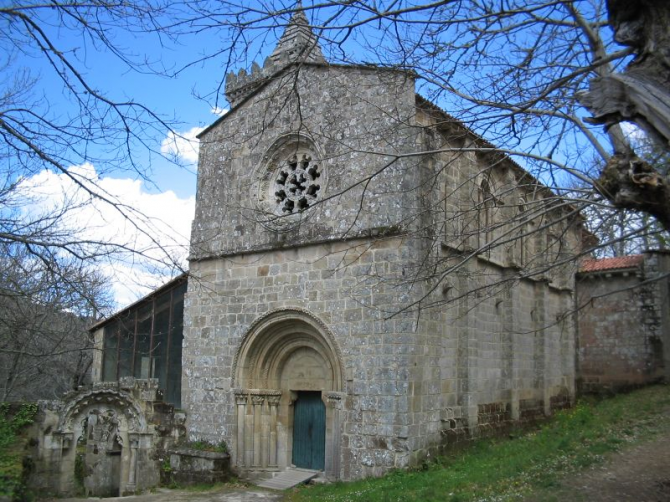
On a winding road, we find the monastery of Santo Estevo de Ribas de Sil, built as others in the region about the tenth century. It currently houses a tourist hostel.
TOP 31:
VERÍN (Ourense)
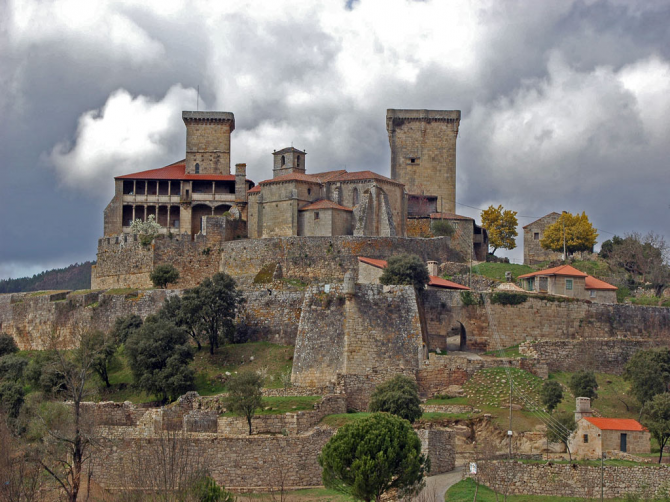
Famous for its wine production, as well as for its bottled water. Verín, with more than 14,000 inhabitants, is a large villa, with numerous hiking trails and a beautiful natural environment. At the top of the walled city, we find the castle of Monterrei, which due to the Hispano-Spanish war, acted both as a fortress, as a hospital, and as a monastery. Highlights: Spring of Cabreiroá and Manantial de Sousas Castle of Monterrey Church of Santa María de Mixós House of Acevedo Sanctuary of the Remedies
TOP 30:
FOZ (Rías Altas, Lugo)
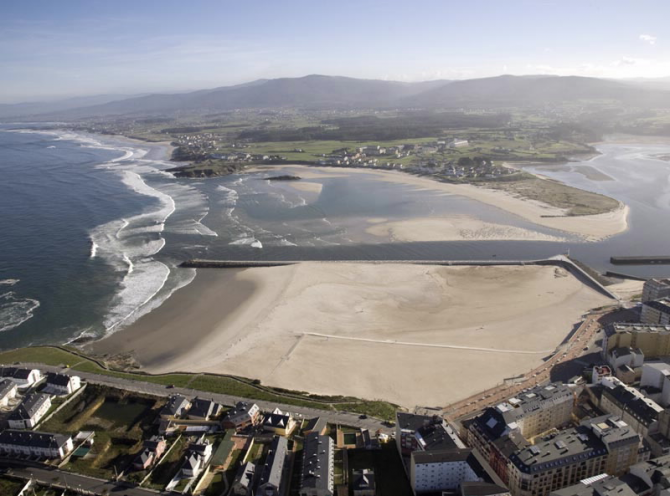
Foz is a coastal municipality, with just under 10,000 inhabitants, which borders the Cantabrian community. Although previously Foz was a fishing village, currently most of the economic resources are obtained from tourism. Highlights: The parish of San Martiño Castro de Fazouro The pazo del Conde de Fontao in Santa Cecilia. Beaches of, A Rapadoira [7], Llas [8], Peizás, Pampillosa, Arealonga, As Pólas and Areoura
TOP 29:
MONFORTE DE LEMOS (Lugo)
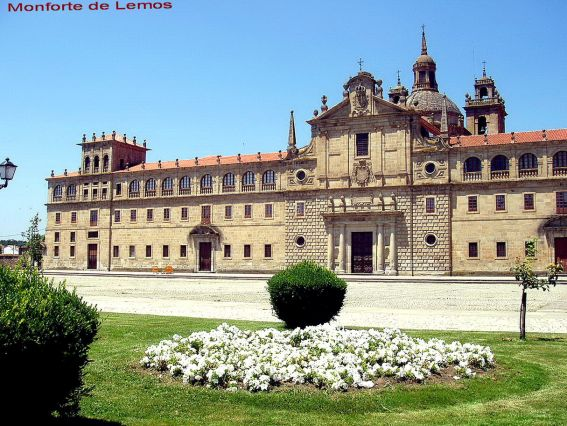
Monforte was, in medieval times, a singular example of city-feudal fortress, around a monastery, leaving for history, a castle located on the strategic mound of Monte de San Vicente, surrounded by a walled enclosure dotted with defensive towers. Today is a beautiful urban center, which retains all the charm of its past. Castle of Monforte Condal Palace Benedictine Monastery of San Vicente del Pino River walk Cabe
TOP 28:
TUI (Pontevedra)
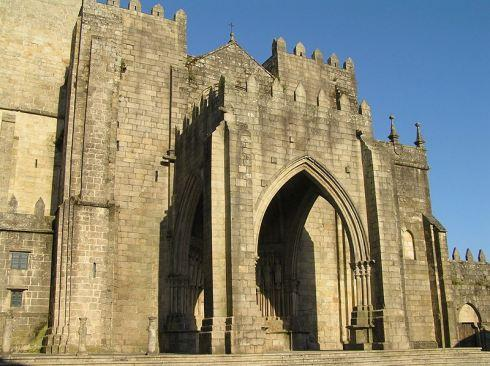
Located on a hill, next to the river Miño, Tuy (Tui in Gallego) has been the scene of innumerable battles hispanolusas, given its status as a border town. Its steep and narrow streets, lead us to its cathedral, built as a fortress and that served both religious worship and battle. Highlights: Cathedral of Santa María de Tuy International Bridge of Tuy Museum and Diocesan Historical Archive
TOP 27:
A GUARDA (Pontevedra)
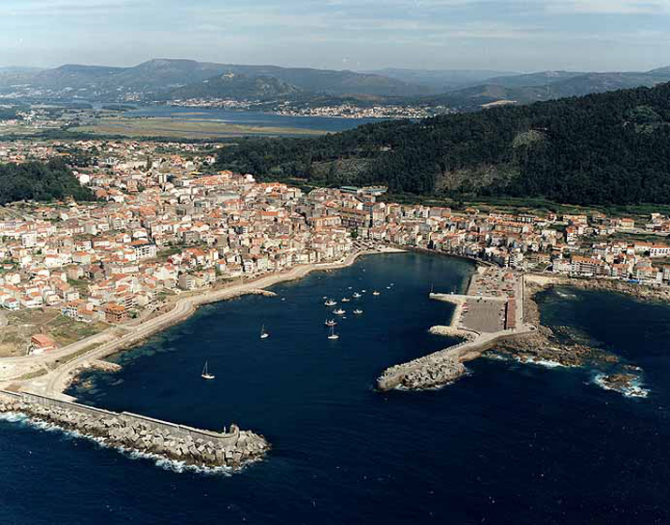
Located on the banks of the Miño River, on the border with Portugal, it is famous for its large number of beaches, such as O Muiño, or A Lamiña, which, due to its location on the Miño River, when the tide rises, are salt water, and when low, fresh water, which makes it possible to enjoy the benefits of both, although its opening to the ocean makes them significantly cold. At certain times of the year, it is usually a meeting point for surfers. On the slope of the Santa Tecla mountain, we can enjoy the restored ruins of Celtic settlements from the 1st century BC, formed by 200 circular dwellings built in stone. Highlights: Church San Lorenzo de Salcidos Castro de Santa Tecla and its museum Surroundings: Monastery of Sta. María de Oia (10 km)
TOP 26:
CARNOTA (A Coruña)
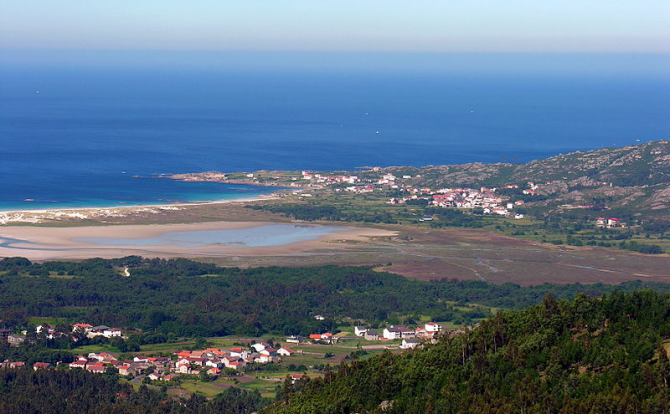
This small town of beautiful white beaches, has one of the largest hórreos in Spain, with almost 35 m. The largest one can be found in Líra, although it only exceeds it by a few centimeters and is in a worse state of conservation. It is a beautiful natural area located at the mouth of the Xallas River, surrounded by marshes and mountains. It has a sandy beach of more than 7 kilometers, which combines with another of stones, of another 5.
TOP 25:
BETANZOS (A Coruña)
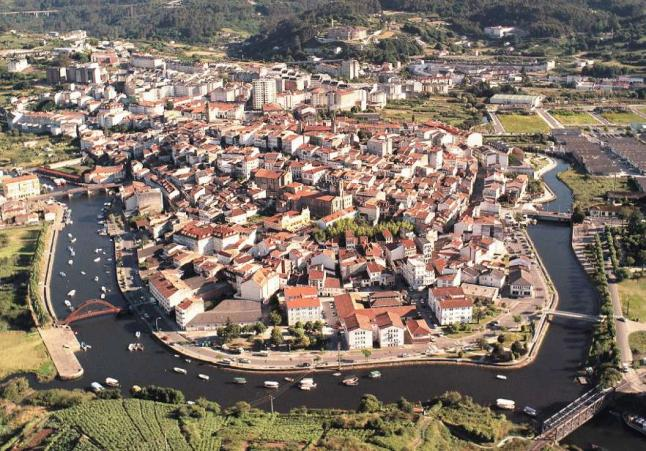
Located in a beautiful valley near the sea, it is considered the capital of Galician Gothic. Betanzos retains one of the best preserved historical centers of Galicia. Account in its main square with a copy of the fountain of Diana de Versailles. Highlights: The church of Santiago and the Church of San Francisco Gothic houses of the Rúa da Near s. XV Walls of the City, s. XV
TOP 24:
MUROS (Rías Baixas, La Coruña)
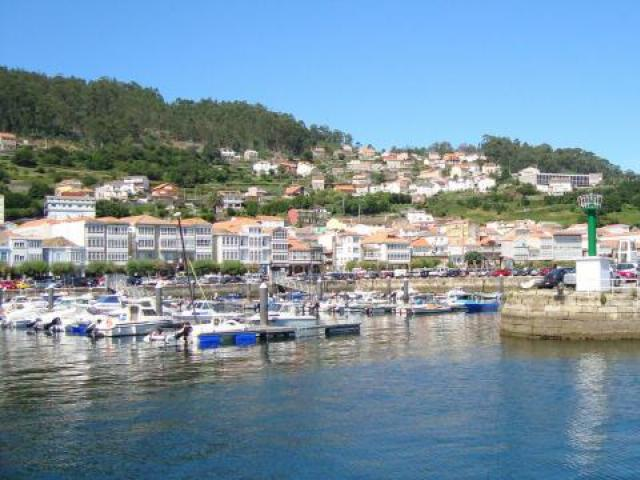
Of just under 10,000 inhabitants, Muros stands out for its Galician popular architecture, which we observe in the typical marine arcades of their homes, under which, in the past, fishing gear was fixed and the fish was salted. Highlights: Church of San Pedro (former Collegiate Church of Santa María) Town Hall The Mercado de Abastos El Arco de Don Diego Parish of Abelleira (Santo Estevo)
TOP 23:
PONTEDEUME (A Coruña)
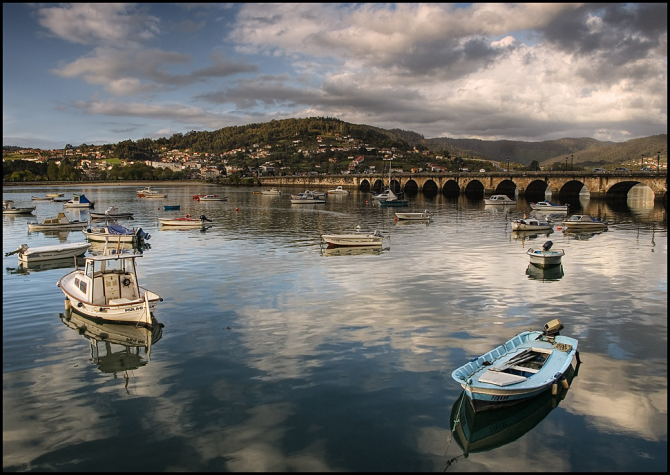
Located about 20 kilometers from La Coruña, we find the pretty fishing village of Pontedeume, of just about 8,000 inhabitants. Highlights: Castillo de Andrade (13th century) Natural park of Fragas del Eume Medieval Bridge
TOP 22:
PADRÓN (A Coruña)
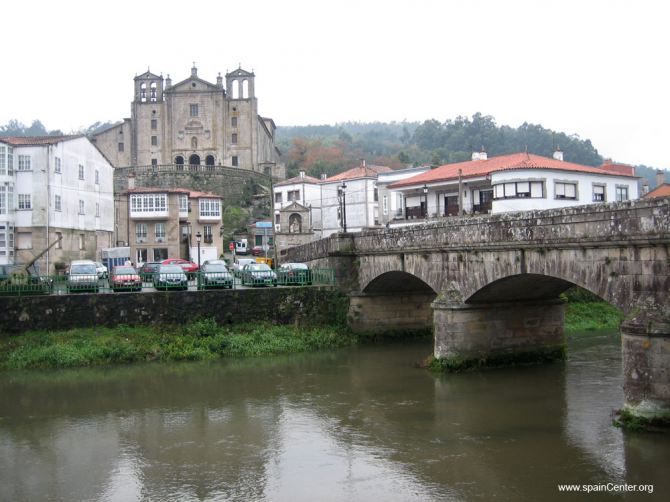
Known for centuries by the name of Iria Flavia, it is the birthplace of the poet Rosalia de Castro and the Spanish Nobel Prize winner Camilo José Cela. Famous in the whole world for its spicy peppers, Padrón, according to legend, the port where the ship arrived brought the body of the Apostle Santiago, thus becoming one of the first Jacobian pilgrimage points. The stone where supposedly the ship was moored is preserved, under worship in the church of Santiago Apostle. Highlights: The hermitage of "Santiaguiño do Monte" House Museum of Rosalía de Castro Church of Santiago Apostol
TOP 21:
O CEBREIRO (Lugo)
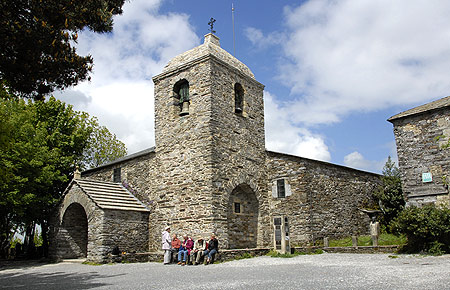
El Cebrero (or Cebreiro in Galician) is a small village, in the municipality of Piedrafita del Cebrero. It is the starting point of many pilgrims on the road to Santiago, being the first town belonging to the Galician community. Its architecture highlights the pallozas (round stone houses with a thatched roof) and the church of Santa María (pre-Romanesque, from the ninth century), which holds a chalice, in which according to legend, during a mass, the wine and the bread became physically blood and flesh.
TOP 20:
O'GROVE (Pontevedra)
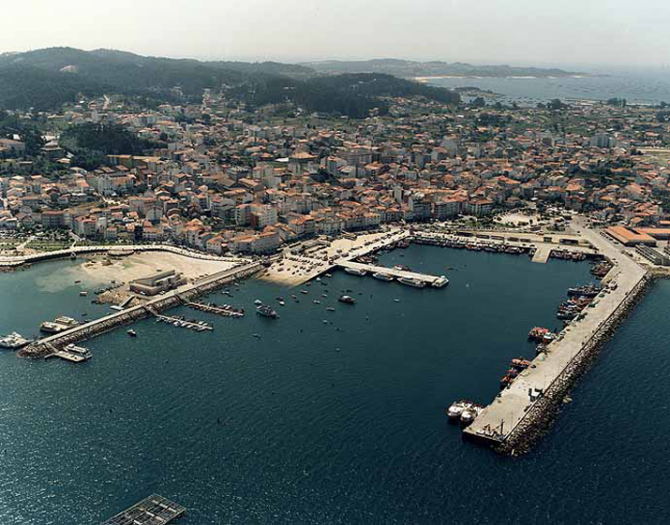
With more than 10 kilometers of beaches and beautiful natural landscapes, O Grove is a beautiful holiday destination, with a beautiful urban center, adorned with more than 50 outdoor sculptures. Several viewpoints allow us to enjoy their beautiful sunsets. The Salt Museum shows us the traditional way of salting the fish.
TOP 19:
VIGO (Pontevedra)
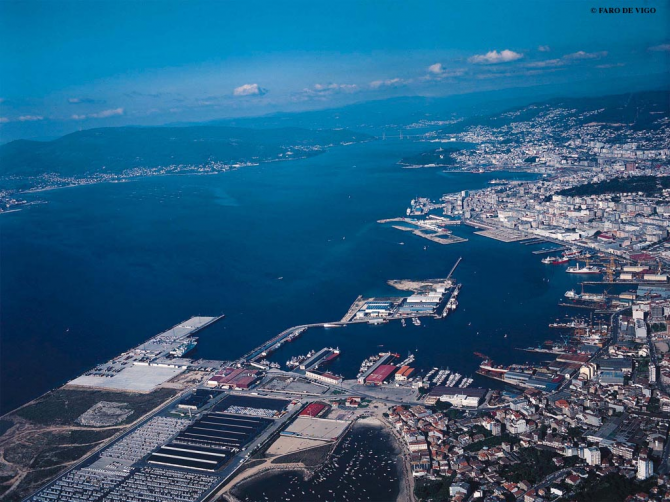
The city with the largest population of the Galician community, with 296 479 inhabitants registered in 2013, it is also one of the main fishing ports in Spain. Surrounded by a wooded hill, Vigo has traditionally presented a sober and industrial cut, but over the years and an intelligent urban architecture, have given a new image to the city, much more modern and innovative. Many modernist sculptures, such as "the horses" by Juan José Oliveira or the Julio Verne monument by José Morales, are combined with numerous Spanish Romanesque churches, which have turned it into an attractive tourist city. Highlights: El Casco Vello, Praza da Constitución, The Cathedral of Santa María The Penzol Library Church of Santiago de Bembrive and Santa María de Castrelos (XII century) MARCO (Museum of Contemporary Art of Vigo) and Museum of the Sea of Galicia Beaches Samil, Carril y Canido Castrelo Park and Monte del Castro
TOP 18:
CAMBADOS (Rías Baixas, Pontevedra)
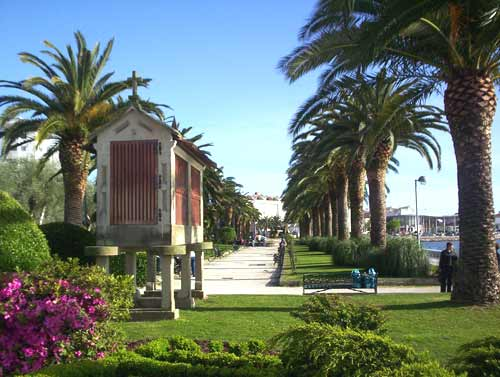
Cambados, with about 14,000 inhabitants and famous for its white wine, has in its streets with countless manor houses and noble houses, being the Plaza de Fefiñáns, its clearest architectural example. They also emphasize the numerous sculptures that adorn its beautiful streets. Highlights: Ruins of Santa Mariña Dozo Tower of San Saturniño Pazo de Bazán and Ulloa Mouth of river Umia Museum Mill of Tides of A Seca Pazo de Fefiñanes
TOP 17:
BAIONA (Pontevedra)
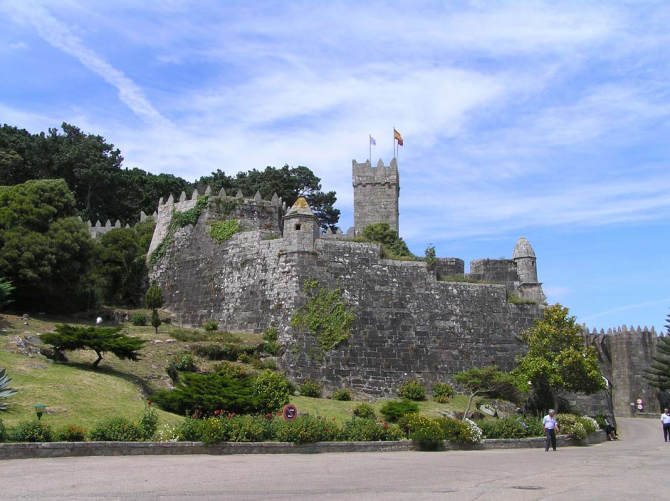
With a little more than 12000 inhabitants, Baiona had the honor of being the first European population to know the discovery of America, because to it, arrived in 1493, Martín Alonso Pinzón, in La Pinta, communicating the news. Located in a wide bay, it is currently a popular Galician resort, with a port that combines traditional fishing boats and new sports boats. Highlights: Castillo de Monterreal Carabela Museum Pinta Ex-Collegiate Church of Santa María Chapel of Santa Liberata Monte de A Groba and Monte Boi
TOP 16:
VILLAGARCIA DE AROUSA (Rías Baixas, Pontevedra)
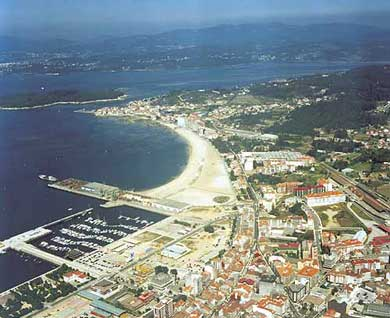
On the shores of the sea and without extreme temperatures, it is a traditional summer resort with a beautiful promenade and beautiful beaches.
TOP 15:
PONTEVEDRA
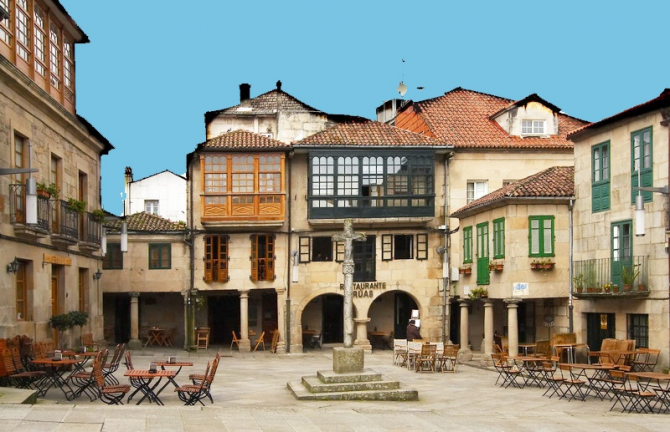
Of Roman origin and more than 80,000 inhabitants, Pontevedra is traditionally known as the "capital of the Rías Baixas". Its narrow and cobbled streets distinguish its historic center, adorned with numerous squares or fountains. Also in recent years has developed an important industrial advance, with the construction of various bridges, such as the Tirantes (1995) and the Corrientes (2012) Highlights: Convent of Santo Domingo Real Basilica of Santa Maria Maggiore Circular church of the Pilgrim Museum of Pontevedra (Works by Goya, Zurbaran and ancient Celtic treasures) Shrine of the Apparitions Mugartegui Baroque Palace
TOP 14:
VIVEIRO (Rías Altas, Lugo)
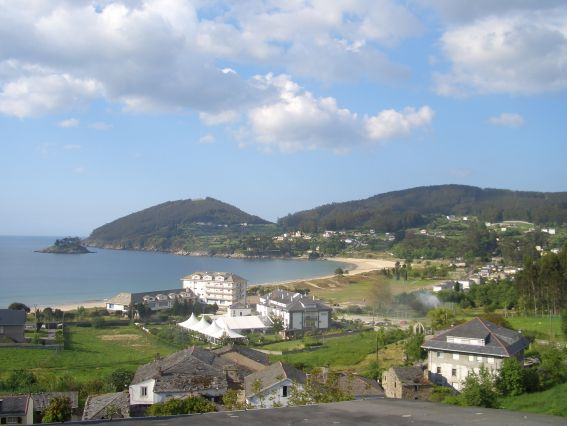
Beautiful city surrounded by Renaissance walls and gates. With 16,108 inhabitants, it is the third most populated municipality in the province. Vivero has a varied patrimonial catalog, in which its historical monuments of civil and religious type and its natural landscapes stand out. Highlights: The beaches of Sacido, Covas and Penal Area. Church and convent of San Francisco Remains and Doors of the Walls Plaza Mayor and House of the Lions Natural Spaces; Souto da Retorta (Eucaliptal) Area Island
TOP 13:
LUGO
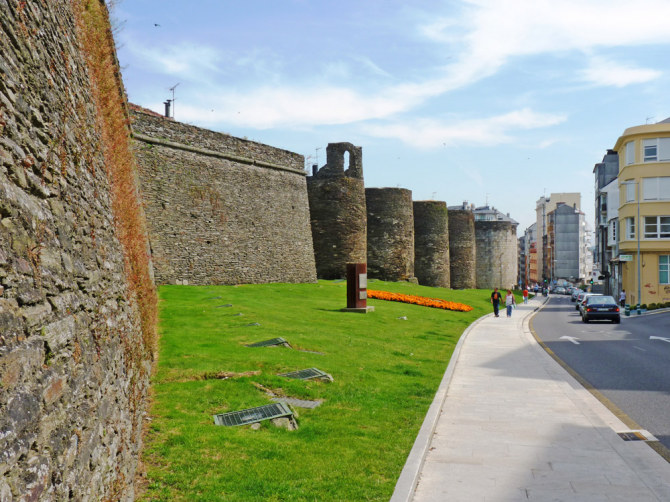
Of Roman origin, it was founded in the year 25 a. By Paulo Fabio Máximo, being the oldest city in Galicia. The Romans, probably, came to them attracted by the effluvium of its thermal waters and left him the legacy of the Roman wall, best preserved in Spain. With 6 kilometers thick, 10 high and more than 10 gates, it was declared a World Heritage Site in 2000. Geographically, the city is located on a hill, bordered by the river Miño. Highlights: Wall, bridge and Roman spa Cathedral of Santa María de Lugo The provincial museum Parque de Rosalía de Castro Fluvial walks of the rivers Miño and Rato Surroundings: Santa Eulalia de Bóveda (3rd and 4th centuries)
TOP 12:
TO TOXA (Island of La TOJA, Pontevedra)
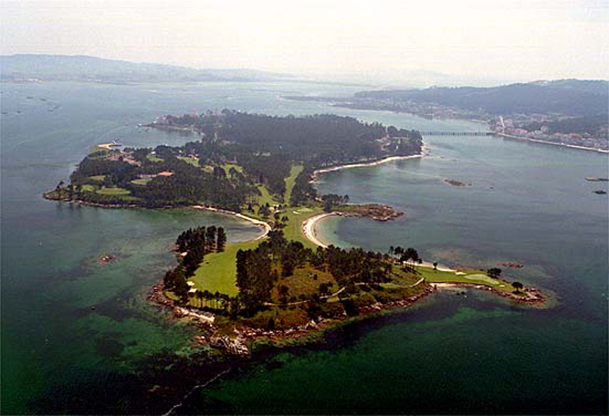
Located west of the town of El Grove, which is linked by an ancient bridge, this wooded island of 110 hectares and just under 50 registered inhabitants, is famous for its elegant and sophisticated thermal spa, which offers extensive properties healing The Hermitage of San Caralampio and the Virgen del Carmen (original plant of the twelfth century) stands out for being covered with a multitude of scallop shells.
TOP 11:
OURENSE
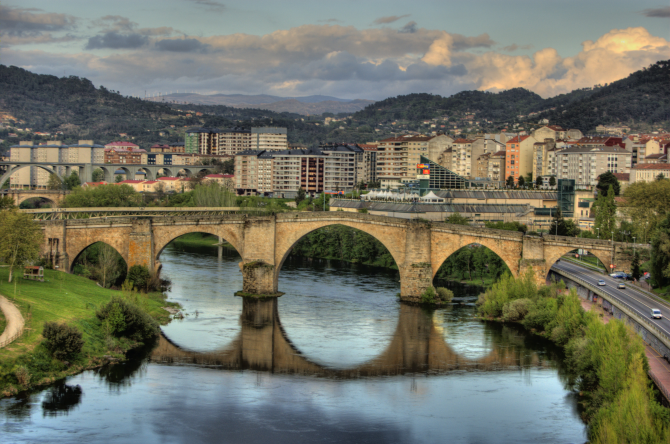
Famous for its many bridges, Ourense, grew around its wonderful thermal waters, until becoming the third most populated city of the Galician community, after Vigo and La Coruña. Even today, the famous waters of Burgas, continue to flow without stopping, at over 65 degrees centigrade and it is possible to visit numerous spas and hot springs and even make a nice tour for some of them on board a picturesque train. However Orense is much more than waters, and has a beautiful old town, around its beautiful main square. Highlights: Burgas Fountains Santa María Nai Ourense Cathedral Roman Bridge Hot Springs; Pozas da Chavasqueira, muíño da Veiga or Outariz hot springs, among other Belnearios; Berán, Carballiño, Cortegada, Partovia
TOP 10:
COMBARRO (Rias Baixas, Pontevedra)
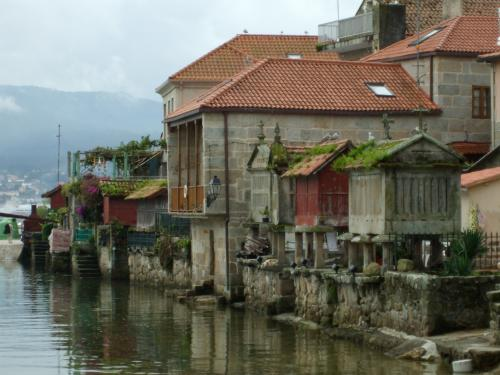
Traditional fishing village, famous for its granaries on the shores of the sea, has just over 1500 inhabitants. It is declared of cultural interest as a Historic Site and as a Historic Site.
TOP 9:
MONDOÑEDO (Lugo)
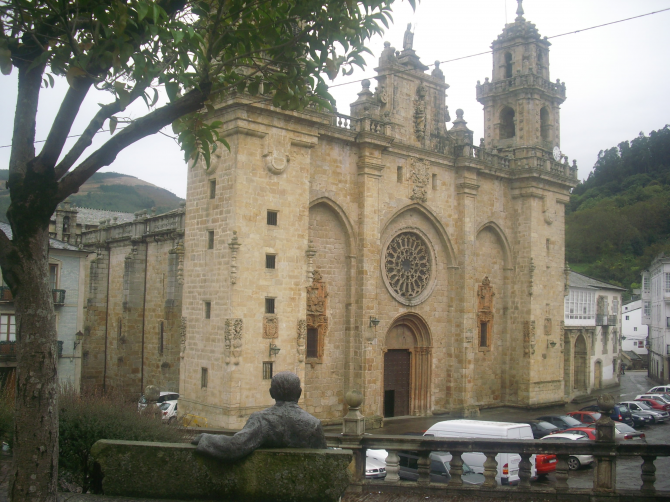
Beautiful city of the interior, of about 5000 inhabitants. The old quarter of the city, declared a Historic-Artistic Site in 1985, has as its center, the square of the cathedral, a national monument built in the 13th century and where all the streets of the town converge. The architectural landscape of the city is characterized by the slab roofs of houses that end in typical stone peaks called "ameas" to protect against the wind. The city of Mondoñedo is one of the points through which the Camino de Santiago passes, being a place of rest for pilgrims. Highlights: Cathedral of Mondoñedo (Romanesque door of the thirteenth century) The cathedral museum "Santos San Cristóbal" The Plaza de España, where the relaxed statue of Don Alvaro Cunqueiro. Sanctuary of the Remedies Santa Catalina Seminary The Diocesan Museum, with works by Zurbaran and El Greco
TOP 8:
COSTA DA MORTE (A Coruña)
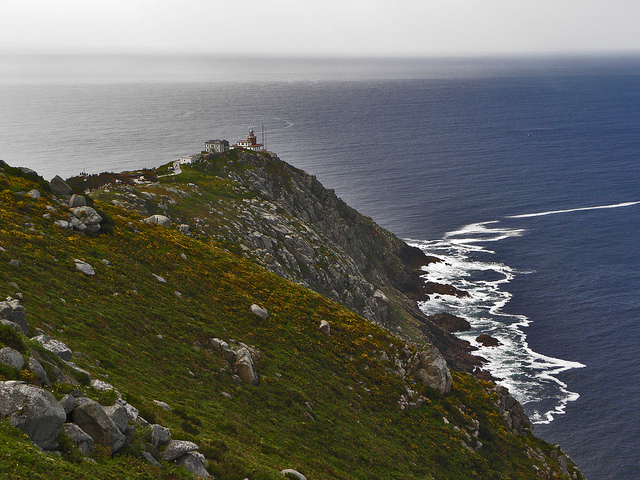
From Malpica to Fisterra, it is called Costa de la Muerte because of the numerous boats that have been lost in the storms or stranded on the cliffs throughout history. It does not have large coastal populations, but small fishing populations, mostly dedicated to the collection of Percebes in its magnificent and rocky cliffs. The coast is dotted with beautiful landscapes such as the beaches of Trece, Reira, or Ariño (Camariñas), Lage, Traba and Soesto (Lage) Mar de Fora and O Rostro (Finisterre), the penedos of Pasarela and Traba, the Coast of Cabo Vilán and the coast that links Camelle with Traba. Some populations are Malpica, Camariñas, Cabo Vilan, Corcubión or Cabo Finisterra
TOP 7:
A CORUÑA
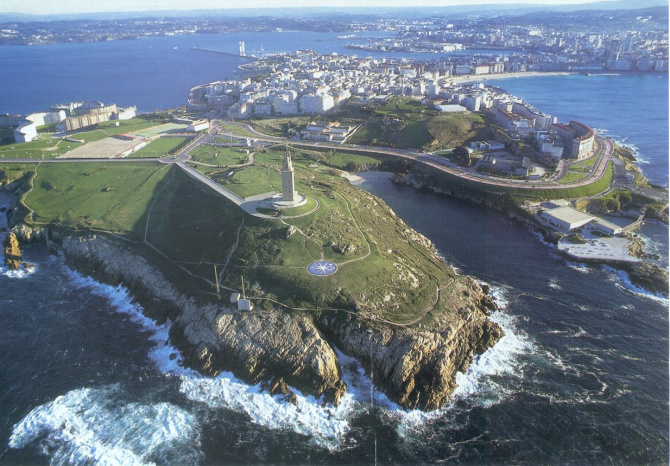
With more than 250,000 inhabitants, A Coruña combines the growth of its industrial districts, with an elegant urban center, which is located in the Plaza de María Pita, its largest meeting center. Its beautiful promenade, adorned with modernist sculptures, culminates in the Tower of Hercules, the oldest operating lighthouse in Europe. It also has an active port, from which the Spanish Invincible Armada left for England in 1588. Highlights: Castillo de San Antón and La Torre de Hércules Collegiate Church of Santa María The Church of Santiago (12th-13th centuries) Riazor, Orzán and Matadero Beaches Monte San Pedro Aquarium Finisterrae, the House of Fish The House of Man and the House of Sciences
TOP 6:
CELANOVA (Ourense)

Celanova, of little more than 6000 inhabitants, is known first of all, by the monastery of San Salvador. Founded in the 10th century, it is a living example of Spanish architecture, since it has been remodeled according to the predominant style of each period. Surroundings; Santa Comba de Bande (7th Century) (26 kilometers)
TOP 5:
SANTIAGO DE COMPOSTELA (A Coruña)
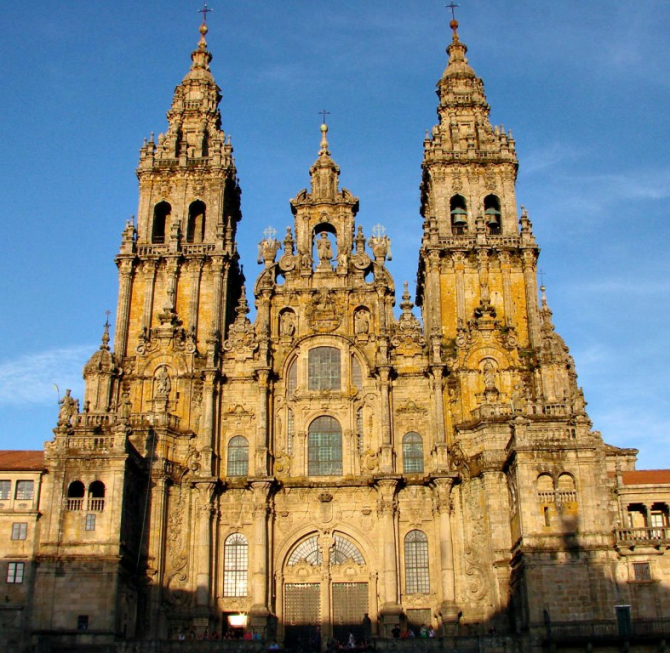
Capital of the Autonomous Community of Galicia, Santiago de Compostela is one of the main centers of Christian pilgrimage, since, according to legend, in 1077 the remains of the saint were found there. Its spectacular Cathedral and its monumental squares, give year after year, welcome thousands of pilgrims, who arrive in the city, after completing the beautiful and spiritual Camino de Santiago. The old city is a World Heritage Site by Unesco since 1985. Highlights: Plaza del Obradoiro and Cathedral of Santiago Hostal de los Reyes Católicos Chapel of Souls Pilgrimage Museum and Museum of the Galician People
TOP 4:
THE CIES ISLANDS (Rias Baixas, Pontevedra)
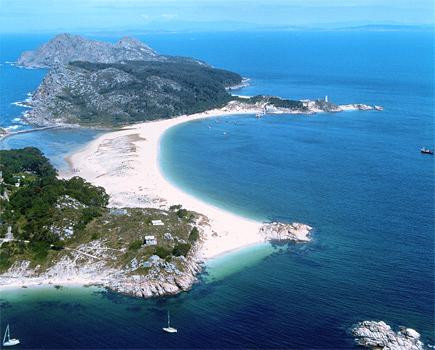
Belonging to the municipality of Vigo, the Cies Islands, form a beautiful archipelago of three islands, North or Monteagudo, Del Medio or Faro and Sur or San Martiño. They were declared a natural park in 1980, and are included in the National Park of the Atlantic Islands of Galicia created in 2002. In February 2007 the British newspaper 'The Guardian' chose the beach of Rhodes as "the best beach in the world". Its flora and natural fauna, accompanied by the white sand of its beaches, make it a unique and unique place.
TOP 3:
RIA DE ORTIGUEIRA (Rías Altas, A coruña)
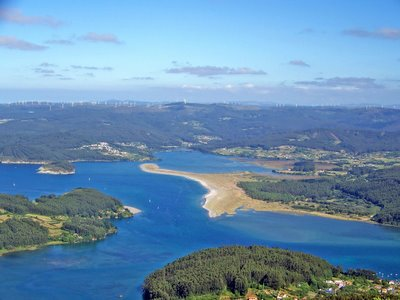
Splashed with unspoiled beaches and coves, Ortigueira is an estuary of lush vegetation and rugged landscapes. It is crowned by the Sierra de A Capelada, where wild horses abound and the "herba de namorar" (grass to fall in love). In front of the island of San Vicente, which can be reached on foot at low tide, stretches the spectacular Prairie de Morouzos, over 2 km and surrounded by pine forests. The town of Ortigueira has 6,871 inhabitants. In it, it is celebrated annually, since 1978, the International Celtic World Festival in which folk and Celtic music are mixed. The dates of celebration coincide with the second weekend of the month of July.
TOP 2:
SAN ANDRÉS DE TEIXIDO (Rías Altas, A coruña)
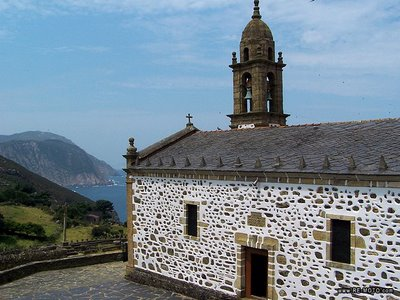
San Andrés de Texeido, is a village located on some cliffs, east of the municipality of Cedeira, in the Sierra de A Capelada. According to the INE in 2007, it had 49 inhabitants (29 men and 20 women). It is known for pilgrimages to the chapel of San Andrés, where, according to the popular saying "vai de morto quen non foi de vivo" (it is dead who was not alive). It is tradition to make the pilgrimage in life by carrying a stone that is deposited in one of the amilladoiros (heaps of stones) in the area. You have to drink from "La Fuente de los Tres Caños", ask San Andrés for a wish and throw in the water a small piece of bread, that if it does not sink we will attract good fortune to our life (at least for a year).
TOP 1:
CEDEIRA (Rías Altas, A Coruña)
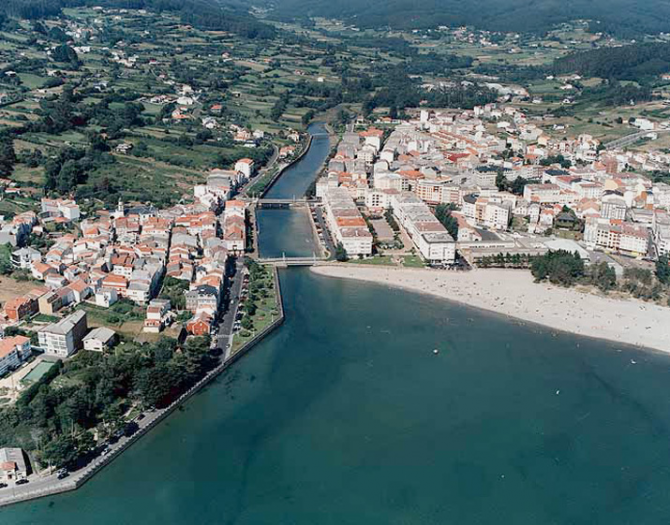
The town of Cedeira, located in a beautiful bay, is a famous summer resort, where its long and curved beaches stand out. Its population amounts to 7,511 inhabitants in 2008 according to the INE. Highlights: Parish of Cedeira (Santa María del Mar) and Parish of Piñeiro (San Cosme) Beaches of Magdalena, area longa or bubbles, among others


